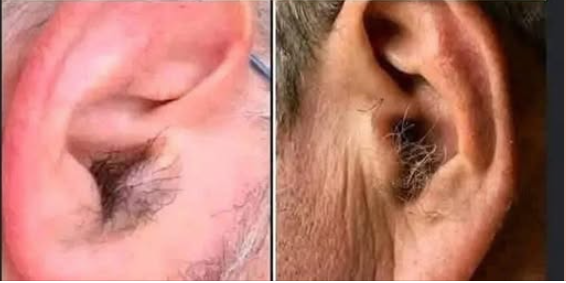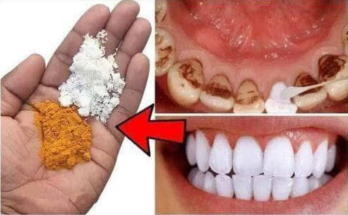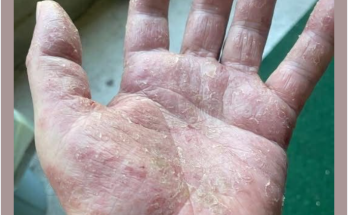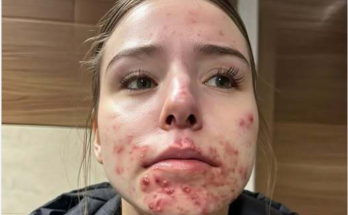Why Does Hair Grow on Your Ears? The Science Behind This Common Aging Phenomenon
Have you ever looked in the mirror and noticed hair sprouting from your ears, seemingly out of nowhere? While it might feel a bit odd — or even alarming — ear hair growth is a surprisingly common experience, especially among men as they age. Though often written off as a harmless cosmetic nuisance, the appearance of ear hair can actually reflect deeper biological processes and, in some cases, signal underlying health conditions.
Let’s take a closer look at why hair grows on your ears, what causes it to become more prominent with age, and when it might warrant a visit to the doctor.
The Role of Hormones: Androgens at Work
Hair growth anywhere on the body is influenced by hormones — particularly androgens, which include testosterone and its more potent derivative, dihydrotestosterone (DHT). While both men and women produce androgens, men tend to have much higher levels, which is why they typically experience more body and facial hair growth.
Hair follicles throughout the body respond differently to these hormones depending on their location. On the scalp, DHT can actually shrink hair follicles and lead to baldness. But in other areas, like the ears, nose, and eyebrows, DHT can stimulate hair growth instead — particularly as people age.
As men get older, their follicles in certain areas become more sensitive to androgens, even if hormone levels themselves don’t dramatically increase. This increased sensitivity explains why many men notice thicker, darker hair sprouting from places like the ears and nostrils later in life.
Inner Ear Hair vs. Outer Ear Hair
Not all ear hair is the same. Inside the ear canal, fine hairs known as cilia serve an important protective function. They help trap dust, debris, and even small insects, keeping them from entering the delicate inner structures of the ear. These hairs work alongside earwax to maintain ear hygiene and prevent infections.
However, the outer ear — especially the tragus (the small pointed area just in front of the ear canal) and the helix (the rim of the ear) — can also start to sprout thick, dark hairs. This hair doesn’t serve a protective function and is largely considered a cosmetic issue. Its sudden appearance or increase in volume can be surprising, but it’s usually harmless.
Aging and Genetics: The Primary Culprits
Aging is the most common reason for increased ear hair growth. Many men begin noticing it in their 40s or 50s, and it often becomes more pronounced over time. This is a normal part of the aging process and is closely tied to the hormonal changes mentioned earlier.
Genetics also play a major role. If your father or grandfather had prominent ear hair, chances are you might develop it too. Your genetic makeup determines not only the density of your hair follicles but also how they respond to hormonal changes throughout your life.
When It’s More Than Just Age: Hypertrichosis and Other Conditions
While most cases of ear hair growth are benign, there are rare conditions that can cause excessive or abnormal hair growth in unusual areas. One such condition is hypertrichosis, sometimes referred to as “werewolf syndrome.” This disorder leads to excessive hair growth anywhere on the body, including places where hair is typically minimal — like the outer ears.
Hypertrichosis can be congenital (present at birth) or acquired later in life due to medications, metabolic disorders, or other underlying health issues. In such cases, ear hair is just one of many symptoms and is usually accompanied by abnormal hair growth elsewhere.
Could It Be a Sign of Heart Disease?
Interestingly, some studies have suggested a potential link between excessive ear hair and coronary artery disease (CAD). One widely cited study from the 1980s found a correlation between hair growth on the ear’s helix and an increased risk of heart disease. However, this research has been met with skepticism and remains inconclusive. Most medical professionals agree that ear hair alone is not a reliable indicator of cardiovascular health.
That said, if sudden or unusual hair growth is accompanied by other symptoms — such as fatigue, chest pain, or unexplained weight changes — it’s always a good idea to speak with a healthcare provider.
Managing and Removing Ear Hair
If ear hair bothers you, there are safe and effective ways to manage it:
-
Trimming: Small personal grooming tools, such as electric trimmers, are designed for safe use around the ears.
-
Waxing: While more painful and requiring professional care, waxing can keep hair at bay for longer periods.
-
Laser Hair Removal: For a more permanent solution, laser treatments can reduce hair growth by targeting the follicles.
Always use caution when removing hair around or inside the ear canal, and avoid inserting sharp objects that could damage delicate tissues.
Final Thoughts
Though it might seem like a strange or even embarrassing development, ear hair growth is a completely natural part of aging — especially for men. It’s mostly driven by hormones and genetics, and in most cases, it’s nothing to worry about. However, if you notice sudden changes or unusual patterns in hair growth, it’s worth checking in with your doctor to rule out any underlying issues.
So the next time you spot a stray hair peeking out from your ear, remember — it’s not just random. It’s your biology at work.



